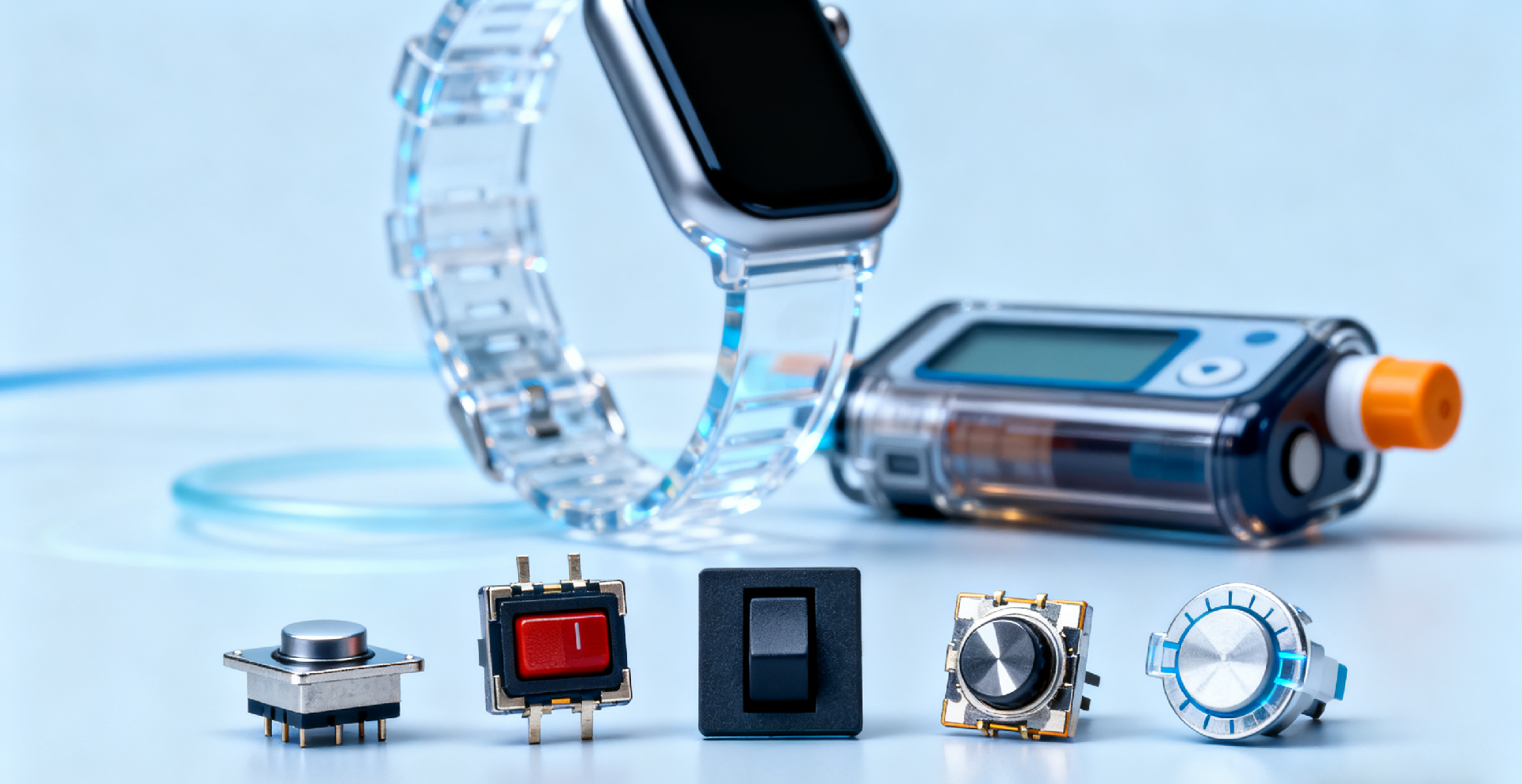
Choosing a switch for a smartwatch or an insulin pump might seem like a small detail, but it’s not. It’s the physical touchpoint between the user and the device. Get it right, and the interaction feels seamless. Get it wrong, and it can become the product's biggest pain point.
Think of this guide as your cheat sheet for finding that perfect switch.
1. Tactile Switches – For That Satisfying "Click"
The Vibe: Like the home button on an old smartphone—a quick, responsive press with satisfying feedback.
Where You’ll Use It:
Wearables: Side buttons on smartwatches (for power/shortcuts), play/pause buttons on earbuds.
Medical Devices: Measurement buttons on handheld thermometers, "confirm" keys on portable monitors, start/pause on infusion pumps.
Ask Yourself: How much force is needed? (Avoid accidental presses.) Is the tactile feedback clear? (Crucial for blind operation.) Is it slim enough for our sleek design?
2. Toggle Switches – For Absolute Certainty
The Vibe: That classic rocker switch on a desk lamp. A definitive "on" or "off" you can see and feel.
Where You’ll Use It:
Wearables: Rare in mainstream wearables, but perfect for the "master power switch" on rugged, professional-grade gear.
Medical Devices: This is its home turf. The main power switch on critical equipment like patient monitors and ventilators, where there's zero room for error.
Ask Yourself: How robust does it need to be? Can it handle the electrical load? Does it need to be sealed against dust or moisture?
3. Rotary Switches – For Precision Control
The Vibe: The volume knob on a car stereo. It’s all about scrolling through options or making fine adjustments.
Where You’ll Use It:
Wearables: The "digital crown" on a premium smartwatch for scrolling and zooming.
Medical Devices: Adjusting screen brightness or alarm volume on a monitor, selecting modes on lab equipment.
Ask Yourself: How many positions do we need? How smooth should the rotation feel? Does it need to be splash-proof?
4. The "Tough Enough" Switch – Built for Sweat & Sterilization
Key Note: "Waterproof" isn't a switch type; it's a feature that tactile, toggle, and rotary switches can all have.
The Problem It Solves: Surviving sweat, rain, and repeated wipe-downs with disinfectants.
When It's Non-Negotiable:
Wearables: Fitness trackers, swim-proof headphones.
Medical Devices: Nearly everything, especially handhelds and surgical tools that require frequent cleaning. This is critical for device longevity and infection control.
Ask Yourself: What IP rating do we need (e.g., IP67/68)? Is the sealing material bio-compatible?
Your 5-Minute Switch Checklist
Before you decide, run through this list:
Primary Job: Does the user need to tap it (tactile), flip it (toggle), or turn it (rotary)?
Work Environment: Will it face sweat, rain, or daily cleaning with alcohol wipes?
User Feel: Does it feel good to press? Can it be used without looking?
Space Constraints: How much physical space do we have for it?
Long-Term Partner: Will its mechanical life outlast the product? Does it meet relevant medical safety standards?
Choosing the right switch is like giving your device a trustworthy handshake. It’s a small detail that makes a huge difference in how your product is experienced.
